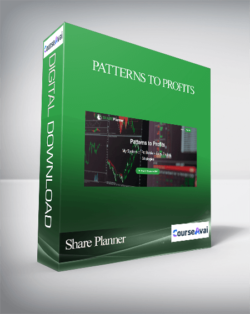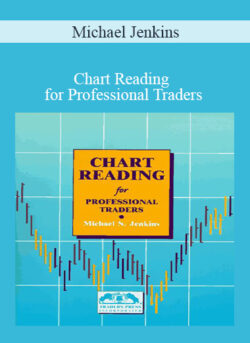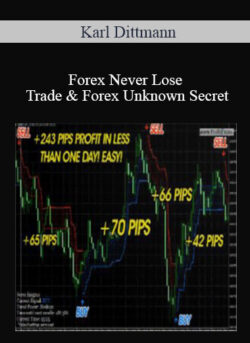Back Spread and Ratio Spreads involve putting on an unbalanced amount of Long and Short Options. If we have more Long Options than Short, the position is called a Back Spread and if we have morePurchase Hari Swaminathan – Backspreads, Diagonals and Butterflies – Advanced Options Strategies courses at here with PRICE $199 $28Hari Swaminathan – Backspreads, Diagonals and Butterflies – Advanced Options StrategiesCourse THIS OPTION SPREADS COURSE COVERS THREE (3) ADVANCED OPTIONS STRATEGIES – BACKSPREADS, DIAGONALS AND BUTTERFLY SPREADSSECTION I – BACKSPREADS AND RATIO SPREADSBack Spread and Ratio Spreads involve putting on an unbalanced amount of Long and Short Options. If we have more Long Options than Short, the position is called a Back Spread and if we have more Short Options than Long, the position is called a Ratio Spread. In a Ratio spread, you have unlimited losses on one side because you have more Short Options. The Back Spread is part of the BUSY PROFESSIONAL SERIES can be constructed in many creative ways, and we show you how you can manage different strike prices as well as different ratios of Long and Short Options to construct an optimal Back Option Spreads. We don’t recommend Ratio spreads as they have an unlimited loss potential.What you will masterWhat is the philosophy of Back spreads and Ratio spreadsDifferent creative possibilities with the Back spreadHow should we look at the Greeks in a Back SpreadImportance of understanding the “Valley of death”How should we avoid the valley of deathWhy is this a Volatility strategyWhy do we not recommend a Ratio spreadWhy is the back Spread a great trade for the busy professionalSECTION II – DIAGONALS AND DOUBLE DIAGONALSThe Diagonal is a variation of the Calendar time spread, and it tends to reduce the Vega exposure of a Calendar spread. Due to this fact, it also has a Delta bias when the trade is put on. It is important that you understand and become a master at trading Calendar spreads before you try a Diagonal spread. Although the Diagonal has very similar characteristics as a Calendar spread, the Diagonal is a complex variation of the Calendar spread. Just like in Calendars, the easiest adjustment to a Diagonal spread is to convert it into a Double Diagonal on the losing side, and the course covers this adjustment in detail. You will also benefit from a higher Theta decay than in regular Calendars, however the compromise you make is that the risk exposure in higher than a Calendar, and you also have a Delta bias.What you will masterWhat are Diagonals and how do they differ from CalendarsWhy are they difficult to adjustWhat are the normal adjustments for a DiagonalHow the double diagonal increases your profit zone and your max profit areaWhy does Diagonals have better Theta decay than CalendarsWhy do Diagonals reduce the impact of VegaWhy is there a higher risk in Diagonals than CalendarsSECTION III – BUTTERFLY SPREADSThe Butterfly is a low risk, high reward, and low probability strategy. The Butterfly involves 3 different Options including Long and Short options, so it can be a bit difficult to manage once its put on. But the Butterfly can produce great results if it works, and in many cases the cost of the Butterfly is minimal, and if you’re lucky, you may even receive a credit for the Butterfly. Both these trades are generally put on by hardcore Options traders. The Butterfly trade should not be your regular “bread and butter” trade in the sense that you can’t rinse and repeat this strategy all the time for consistent monthly income. But the Butterfly can be an excellent strategy in very specific circumstances – like protecting the losing side of an Iron condor or a credit spread. Another great application for the Butterfly is during an earnings report. Both of these specific applications are covered in detail in this course of Advanced Options Strategies.What you will masterWhy is the Butterfly a low risk, high reward strategyWhat is the probability of the Butterfly producing fantastic resultsHow do we adjust ButterfliesWhy the Butterfly is a speculative strategyWhy is the Butterfly not a “bread and butter” tradeWhat are the specific instances where a Butterfly can workWhen does the Butterfly generate its maximum profitsHow can use Butterfly trades as a hedge to protect our monthly income strategiesWhat are the requirements?Options basics, Call and Puts and Vertical spreadsOptions adjustments and Spread adjustmentsCalendar spreads (for Diagonals)Credit spreads (for Butterfly spreads)What am I going to get from this course?Learn about three advanced strategies – Backspreads, Diagonals and Butterfly spreadsLearn how the Backspread can be constructed in very creative waysWhy the Backspread can be a monthly income strategy and a Volatility strategy at the same timeWhat are the differences between a Calendar spread and a DiagonalWhy the Diagonal spread is considered an exotic strategyLearn about the very exciting Butterfly spreadWhat are the best times to trade a Butterfly spreadWhat are the specific applications of a Butterfly spread that can make it a very powerful weapon in your arsenal, especially if you have losing tradesFull detailsWhat is the target audience?Options traders with all the basic knowledge and want to expand their knowledge of more advanced strategiesWhat you get with this course?Not for you? No problem.30 day money back guarantee.Forever yours.Lifetime access.Learn on the go.Desktop, iOS and Android.Get rewarded.Certificate of completion. Purchase Hari Swaminathan – Backspreads, Diagonals and Butterflies – Advanced Options Strategies courses at here with PRICE $199 $28
 Forexmentor – Forex Scalping Strategy Course
₹4,150.00
Forexmentor – Forex Scalping Strategy Course
₹4,150.00
 Share Planner – Patterns to Profits
₹3,984.00
Share Planner – Patterns to Profits
₹3,984.00
Hari Swaminathan – Backspreads, Diagonals and Butterflies – Advanced Options Strategies
₹4,648.00






